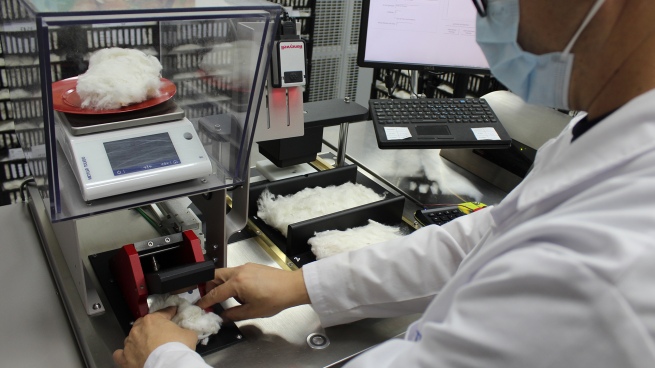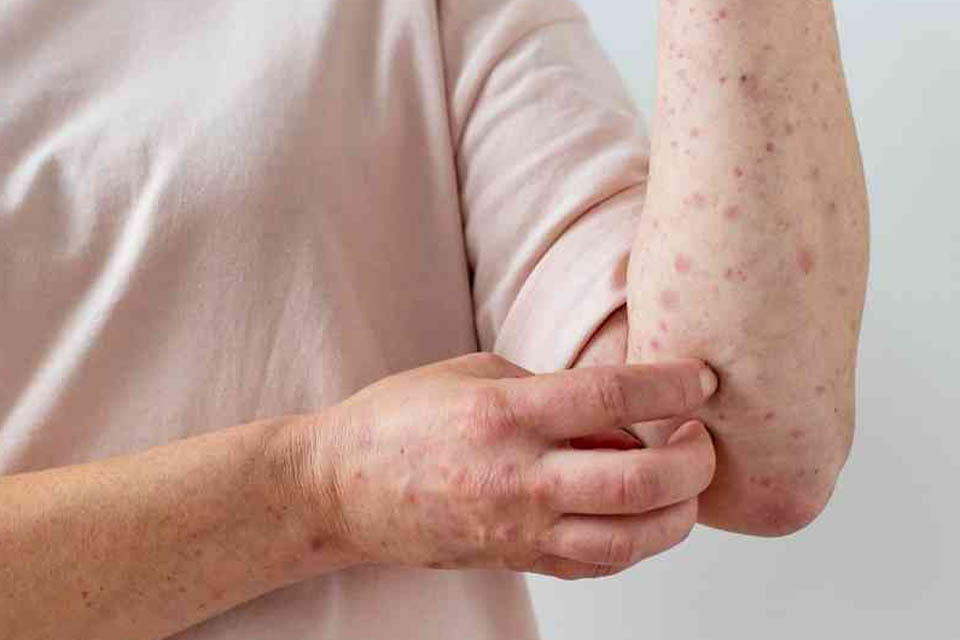From the INTI Santiago del Estero laboratory, analytical support is provided for the measurement of quality for the export of Argentine cotton, “last year we were able to analyze 35,000 samples from all over the country and this year we are going to exceed that number” sent by producers and companies in the cotton sector, Ramiro Casóliba, director of INTI Santiago del Estero and regional deputy manager of NOA, told Télam.
The laboratory located in the Technological Node of the province, where the High Volume Instrument (HVI), manufactured by Zellweger Uster, is located, with which it works with controlled temperature unit conditions, which maintain 20 degrees and 65% humidity throughout the year, throughout the process .
The cotton samples, as detailed, arrive at the laboratory, must acclimatize for 24 hours, then it is verified that they have achieved constant humidity and there just the test is done, currently between 600 and 800 samples per dayhe added.
The cotton quality grading system consists of instrument measurements for length, strength, length uniformity, micronaire, debris, and fiber color.
“These aspects parameterize the quality of the fiber, that is, what product the fiber is going to be used for later,” he commented, emphasizing that “this is done under quality standards, to ensure quality results, since in laboratories we work under the ISO 17025 standard, so that our results can be compared with any laboratory in the country or the world”.
The Institute has “an agreement signed with the Government of the Province, with which we have been working on the quality of cotton fiber and we coordinate with them to try to implement a traceability program together with INTA for the possibility of analyzing the fiber produced in Santiago del Estero,” Casóliba said.
“This program aims to monitor production in the field, through services, to monitor a group of producers, to see how the planting, harvesting, disassembly and then fiber analysis protocols behave and how this impacts quality,” he explained.
In addition to this traceability program, from the province’s INTI laboratory “we provide the fiber quality analysis service (towards the country), with which last year we were able to analyze 35,000 samples from all over the country.”
“This is an objective parameter because currently the way in which cotton is marketed in Argentina is under a subjective, visual, which is done with a qualified appraiser trained under the Argentine cotton standard of the Argentine Chamber of Cotton,” he added.
In addition, training and technical advice are provided to producers, so that they have objective tools to defend the quality of their cotton or how to improve it.
“This is a joint effort between INTI, INTA and the Provincial Government, and we have decided to reinforce this traceability program according to the results we have been obtaining and because we want Santiago del Estero to have a better fiber.”
In this regard, he noted that “Currently Santiago del Estero is the main cotton-producing province and that has to be accompanied from the technical fields and that is our task.”
This quality measurement work is essential for the export of this important product for the manufacture of clothing. “In Argentina, in 2021 there were 145,348.13 tons exported, and so far this year 50,474 tons exported,” Casóliba said.
“To be able to market that fiber, yes or if it must go through HVI, the quality analysis” and that work is carried out in the INTI laboratory in Santiago del Estero.
In the province’s INTI laboratory, 14 people work, and it has a technological support profile for agribusiness, since research, field work and advice are based on three areas: Food, Labeling and Industrial Meteorology.
In the food sector, “professionals provide technical advice and we have a quality laboratory, in which analyzes are carried out that allow a company or entrepreneur to be able to carry out microbiological tests to check that the quality of the food is adequate for human consumption,” he said. expanded.
“As for labeling, we carry out tests and now front labeling is very popular,” he said, adding that in the “industrial meteorology laboratory, instruments for measuring pressure, humidity, thermometers, and scales are calibrated.”









